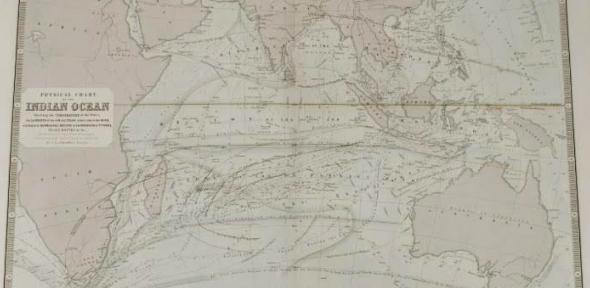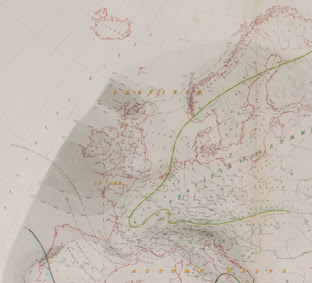In 1854, the Bristol Board of Trade established a meteorological department in order to reduce the number of shipwrecks and to improve navigation routes. Robert FitzRoy (1805-1865), who circumvented the globe with Charles Darwin on the second voyage of HMS Beagle, was appointed Meteorological Statist.
FitzRoy developed a system of forecasting storms based on barometric and cloud readings and implemented a network of storm-warning signals along the British coast. Weather maps greatly appealed to FitzRoy, who wanted to convey weather 'at a glace'. Francis Galton (1822-1911) produced several maps for FitzRoy that charted European weather over periods of months. In his Meteorographica (1863), Galton shared FitzRoy's approach to visualizing and representing meteorological phenomena. He wrote:
"When lists of observations are printed in line and column, they are in too crude a state for employment in weather investigations; after their contents have been sorted into Charts, it becomes possible to comprehend them; but it requires meteorographic Maps to make their meaning apparent at a glance."(1)




